The Epic Five: Road Trip Utah National Parks Guide 2021
Updated: June 23, 2021
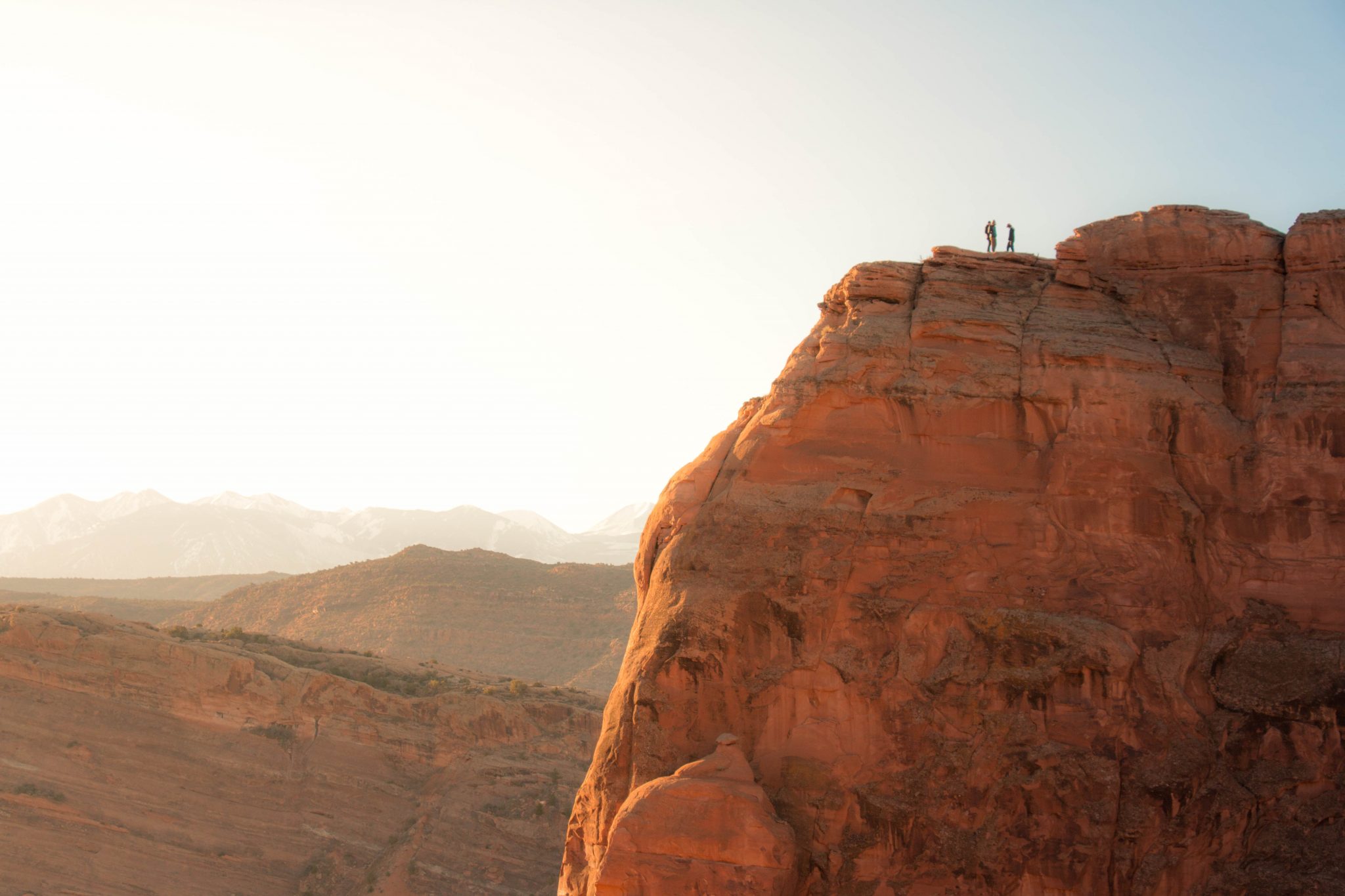
Utah National Parks: Sunrise in Arches National Park
Everything to Know About the Five Utah National Parks
Utah is the state that holds the third most national parks, standing just behind California (nine) and Alaska (eight).
Although often overlooked by nearby states such as Colorado and California, Utah's mountains, cliffs, deserts, and out-of-this-world landscapes should not be missed.
Each of the Utah national parks holds its own diverse landscape. When I first visited the state five years ago, I only managed to visit Zion National Park. Since then, we've completed many return trips to Utah and all its natural glory, including an epic five-day trip to all five national parks.

Utah National Parks: Observation Point
1. Zion National Park
Zion's popularity has grown immensely over the last couple of decades. Much of this thanks to the internet, which often showcases its unique beauty on social media. The most famous hike in Zion, Angel's Landing, is continuously voted as one of the most dangerous hikes in the United States. In 2021, new regulations have come into place that only allow a certain number of hikers on the path each hour to monitor overcrowding on narrow sections of the trail. The hike is fairly straightforward with a well-marked trail, but if you are afraid of height and cliffs this one might not be for you. Arrive early (before sunrise) to avoid waiting in long lines.

Utah National Parks: Angel's Landing
The longer and more difficult Observation Point Trail is a great alternative for those looking for great views without the regulations. Although it has more elevation gain (2100 feet) and a longer trail (round trip 8 miles compared to 5.4), Observation Point is worth the trek. This path takes hikers high up onto the top cliffs of the park, and the point offers a fantastic tunnel view of the entire southern portion of Zion. From the summit, you can look down nearly 1000 feet to the top of Angel's Landing. If you aren't a hiker or have small children, opting in for shorter hikes around the park may be the best option.
Before the popularization of the west coast, many people believed the cliffs in Zion National Park were a myth, as nothing that magical or incredible could be located on earth. Today, millions of people visit the park each year. Once you stand between the red cliffs that make up the valley, you too will understand why the beauty here was so unbelievable.
Other things to do in this Utah National Park: Hike the Narrows and hike the Subway.
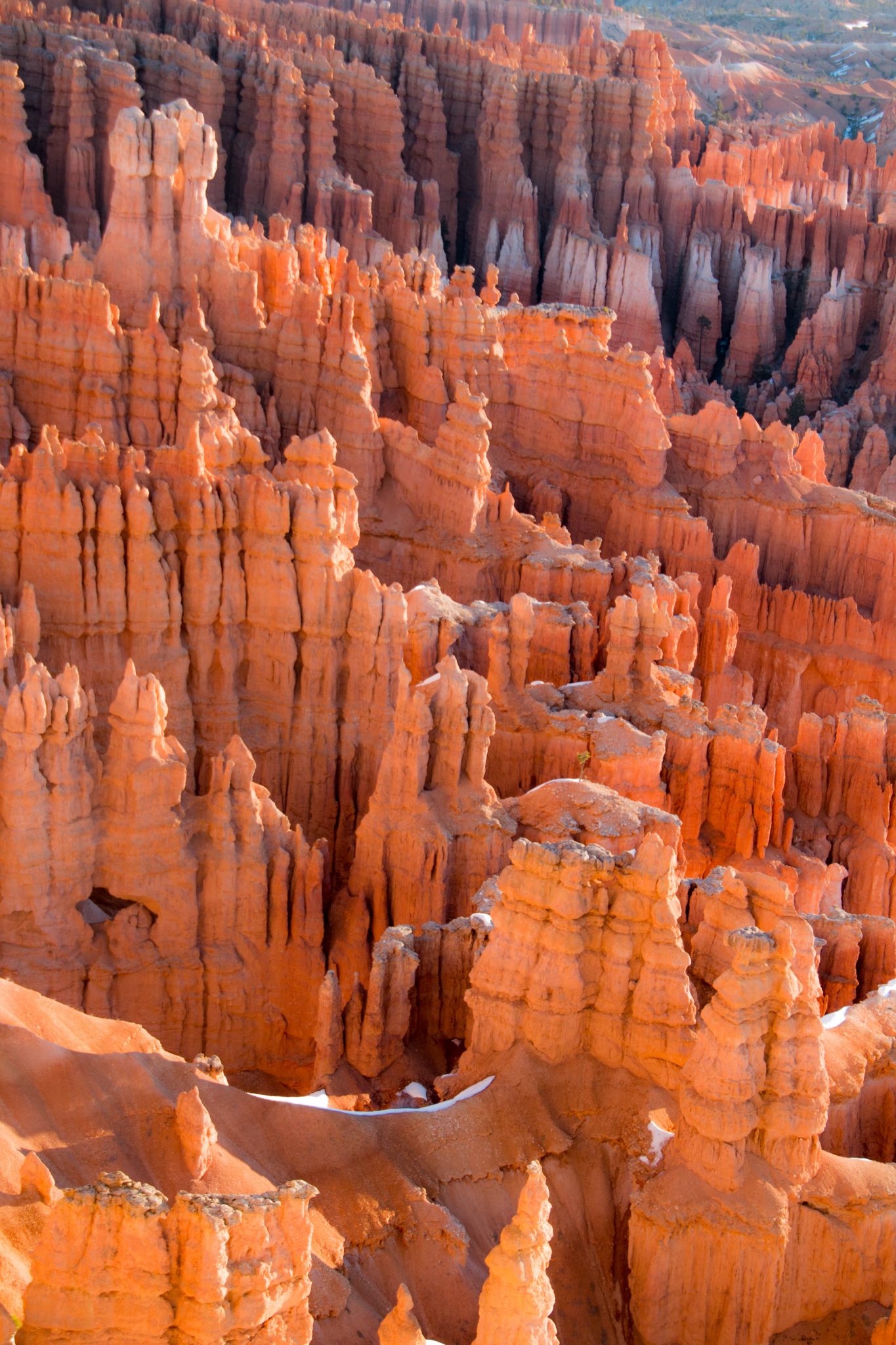
Utah National Parks: Hoodoos, Bryce Canyon National Park
2. Bryce Canyon National Park
The uniqueness of Bryce Canyon National Park is what made it one of my favorite Utah National Parks. In terms of Utah National Parks, Bryce Canyon is one of the smallest by area. However, sometimes the smallest packages hold the biggest surprises.
The famous orange pillars of Bryce are known as Hoodoos and are continually being formed by rain on the soft sandstone rocks. One of the most unique features of Bryce includes the high rate of the changing landscape. In most national parks, it takes tens of thousands of years to change even the slightest formation of the park. Here, the Hoodoos you see today may look drastically different in one hundred years.
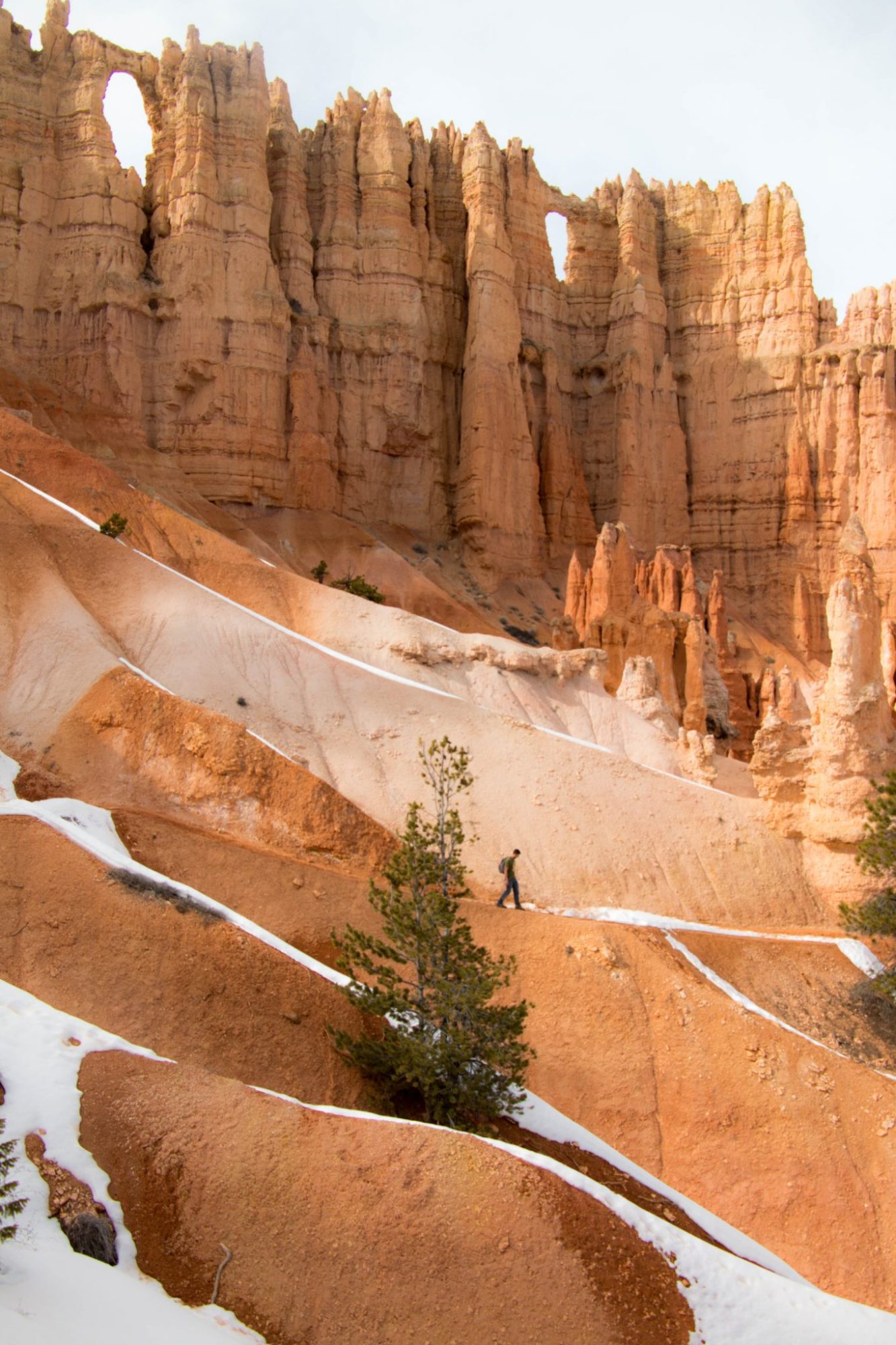
Utah National Parks: Below the Hoodoos, Bryce Canyon National Park
The entrance to the park is on top of the canyon, which gives an incredible view of the hoodoos. There are three main lookout points: Sunrise Point, Sunset Point, and Inspiration Point. I highly recommend watching a sunrise in Bryce Canyon; however, instead of watching it from Sunrise Point (where the masses of people will be), I'd drive to Inspiration Point.
We spent most of the day at Bryce Canyon hiking the Peekaboo and Navajo loop trails. The National Park Service marks the trail as strenuous, but anyone in fairly fit condition should be able to complete it.
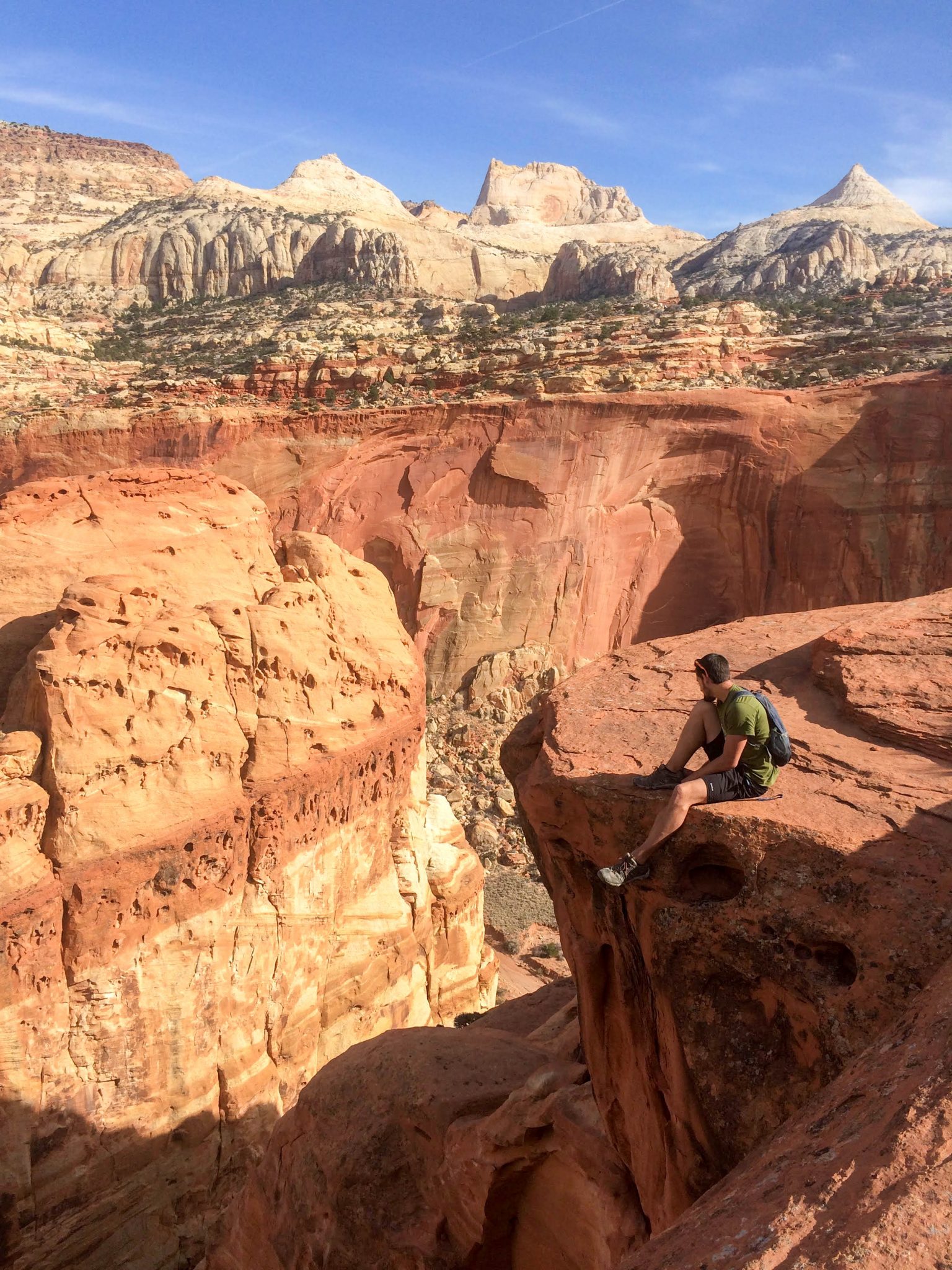
Utah National Parks: Top of Cassidy Arch, Capitol Reef National Park
3. Capitol Reef National Park
Capitol Reef National Park remains relatively unknown to visitors looking to conquer Utah National Parks, but that what's make it special. Before visiting, I had a hard time remembering the name of it myself, but the park will win over both history buffs and nature lovers alike.
Inside the park is the town known as Fruita, which was settled in the late 1800s by some of the first pioneers to walk on the land since the Indians originally made it their home sometime between 80 and 1200 B.C. The old Fruita school building still stands near Indian petroglyphs. If you've never seen petroglyphs before, this is one of the best spots I've seen in the United States.

Utah National Parks: Capitol Reef National Park
The Capitol Gorge Trail is an easy two-mile round trip hike that takes hikers on a lane of Capitol Reef history. On this flat trail, you'll first pass another series of petroglyphs, followed by hundreds of names sketched into the side of a rock. Each name is accompanied by a date ranging from the 1880s to the early 1900s. The names written here are from those first pioneers and land surveyors of the valley. Sketching in the rocks now is strictly prohibited to keep the original names preserved.
Cassidy Arch is a more strenuous hike with an elevation gain of 670 feet. The 3.4 round-trip hike takes you to the top of Cassidy Arch and gives the opportunity to test your balance on the edge of 600+ foot cliffs. The finish offers stunning views of the surrounding landscape.
The fee to visit Capitol Reef is a mere $10, much cheaper than the rest which ranges from $25-$30 per day.

Utah National Parks: Grand View Point, Canyonlands National Park
4. Canyonlands National Park
I wasn't quite sure what to expect at Canyonlands National Park, but I'm happy to say I was far from disappointed (and I only saw the top half).
The main section of this Utah National Park sits atop a 1,400-foot butte. Although a vast plateau above the canyon floor, there is a paved road leading to this section of the park. The harder section to view is, surprisingly, the bottom. A 4x4 dirt road circles all of Canyonlands National Park; however, the road is a rough and rugged 100-mile loop, which officials say should take at least two days to drive the circumference.
The view from the top of Canyonlands National Park was impressive enough. The view stretches for miles and almost feels like a section of the Grand Canyon. If you want the truth, I enjoyed Canyonlands more than the Grand Canyon.
For hikes, Grand View Point is a flat and easy walk that ends at a butte and offers incredible overlooks of the surrounding area. If you feel like channeling your inner daredevil, sit close to the edge of the sheer thousand-foot cliff. It's guaranteed to make your heart skip a few beats.
There are plenty of short and relatively easy hikes throughout this elevated Utah National Park. Fall and spring are the best times to visit as the summer temperatures here often reach 90-100 degrees. In the winter, it is common for snow and below-freezing temperatures. I would confidently say Canyonlands was the biggest surprise of the trip, thanks to its incredible views.
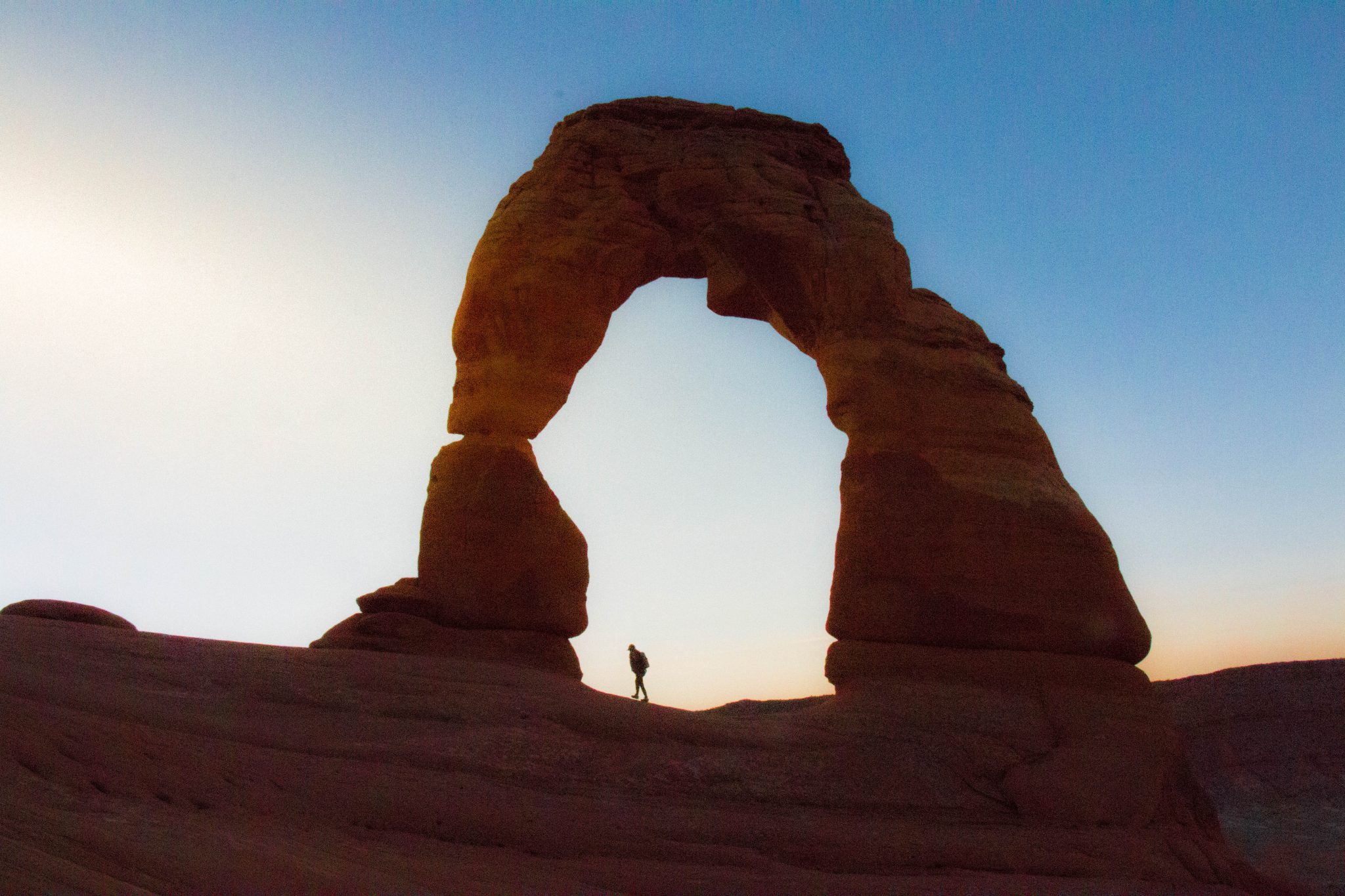
Utah National Parks: Delicate Arch, Arches National Park
5. Arches National Park
Arches National Park is home to one of the most famous natural icons of the United States: The Delicate Arch. Because of this, Arches rivals Zion National Park as the most visited and densely crowded National Park in Utah.
Many people say Delicate Arch offers the best views at sunset, however that also means there will be upwards of 100-200 people in high tourist season. To try and dodge crowds, try going for a sunrise trek instead. When we visited, there were still 20-30 people who managed to wake before dawn, hike 1.5 miles to the arch, and watch the sunrise there as well. Thankfully the crowds weren't overbearing and we managed to have a peaceful sunrise. It was the perfect start to the day.
Arches National Park has thousands of other arches and isn't just named after Delicate Arch. So many arches are found in this area because of the unique way the red rock sits on top of a salt bed and slowly erodes over time due to weathering and cracking. It takes thousands of years for a single arch to erode and form.
The longest and second most famous arch in the park, Landscape Arch, eroded as recently as 1991 when a massive 60-foot piece of rock broke off while hikers sat below it (but were unharmed). Since then, the arch can only be viewed from a nearby platform.
Double Arch is an easy .25 mile walk, which means it gathers large crowds most of the day. In fact, many of the arches are easy to see on foot with little to no elevation gain. Make sure to hike the more primitive routes during mid-day to keep at a distance from the overflowing parking lots. And pack plenty of water!

Utah National Parks: Double Arch, Arches National Park
More tips for the Utah National Parks in 2021
International Dark-Sky Parks: The thing about every Utah National Park is that they double as International Dark Sky Parks. Sparsely populated southern Utah offers millions of stars that can be seen at night with the naked eye. The freeway to get to Arches National Park from central Utah holds a 115 mile stretch of no services. No towns. No gas. No nothing. Bad if you forget to fill up, but great for seeing the Milkway.
When to visit: Summer is the most crowded and the hottest time to visit the Utah National Parks and is my least favorite time to visit. If you are looking to hike, mid-fall and spring are my favorite times in the park. Winter can cause more difficult driving conditions & unpredictable weather but can be a surprisingly pleasant time to visit. The first time we hiked Angel's Landing was in December. The crowds were light and the temperature was perfect.
Other things to note:
- You can never have too much water. If you plan to do any hiking in the Utah National Parks, pack extra and avoid hiking in the middle of the day.
- Don't forget the sunscreen! Hiking during the day includes long exposure to the sun. I've made the sunscreen mistake a few times in my life and it is not pleasant.
- If you plan to book accommodation, try to do so at least six months ahead of time for the best availability and rates. As someone who lives in a tourist town near a National Park (Wyoming), I can tell you things book up fast and those that don't usually aren't worth the price.
- Camping also books out quite early, especially within the National Park borders. If you run into issues finding camp reservations in the Utah National Parks, look 20-30 miles outside the entrance gates or bum it in nearby Walmart parking lots.
A majority of Utah's 2.2 million population lives in the Salt Lake City metro area. Beyond that, it's a wild frontier with a lot to discover. Utah is different, that is clear. The landscape and the culture are each their own. The rarity of this unique state and the string of five national parks should be considered one of America's crowned jewels. Let's protect it for all we have.

At any given moment, Shalee is either lost, hunting for ice cream, or obsessively planning her next adventure.
Born and raised in rural Michigan, she began exploring the shores of Great Lakes as a teen, often sleeping in her car to save money. Eventually, her urge to explore pushed beyond her Midwest borders. Today, Shalee shares her tips and stories to thousands of readers interested in adventure and outdoor tourism. Her pack now includes two spunky hiking cats and her partner, Josh. Learn more about her here.
Join the Adventure



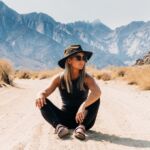

I’m really enjoying reading about your travels. Learning from your posts, too.
Thanks!
Thanks so much, Kathy! I appreciate you following along 🙂
If you’re inclined to read up on Utah’s beauty, Terry Tempest Williams is so eloquent.
Our National Parks are in such peril right now. Hope folks will contact their Congresswo/man and ask (beg) them to keep these treasures a priority.
Shalee, I never miss your essays ~ thank you!
Fellow M22 lover,
Joni
Thanks, Joni! I sure hope so too. I’m very worried about the future of these beautiful places, but I hope the fight will not be lost.
Beautiful pictures and great, informative post!
We’re heading to Utah after we get back to the states & now I’m even more excited. It looks so beautiful!
Can’t wait to see more of your adventures. 🙂
I also explored these fabulous parks in my these tours and every time get great experience there.